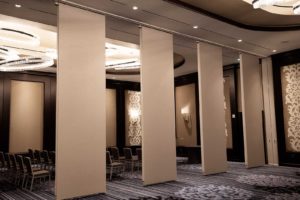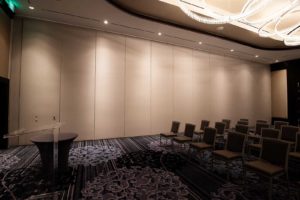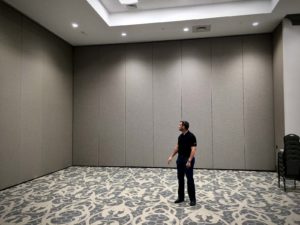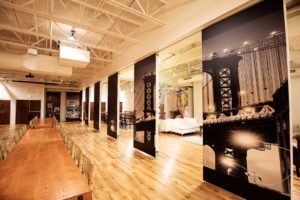STC Vs. NRC Ratings on Operable Partitions

Operable partitions, the panelized, horizontally acting movable acoustic barrier (some people call “Air-Walls”), are typically a functional replacement for a drywall or fixed glass partition. The separation created is flexible and can expand square footage in a given room once folded back.

Close the operable partition, and the expectation typically is that the two subdivide rooms will function as two SEPARATE rooms. Meetings can occur on each side, without sound bleeding through disrupting the adjacent event.

Consequently, we want to ensure the rating the operable partition is built to corresponds with the expectation of the usage of the space. One area where available ratings sometimes conflict is in the realm of STC (Sound TRANSMISSION Coefficient) and NRC (Noise REDUCTION Coefficient) ratings. STC measures the resistance of sound wave TRANSMISSION, while NRC measures how much sound is ABSORBED in the panel, or what is sometimes referred to as a reduction to the “hotness” or reflectivity of sound in a room.

If the intent is to provide two separated meeting rooms, then blocking of sound transmissions between room is priority #1. The effect of the sound in the room, or its reflectivity, would still be important, but not primary. Therefore, in this case the Operable Partition’s STC should remain high since it is the primary blocking element to the transmission of sound, while we could explore other options to boost the NRC rating of the room itself.

So what could we do to the operable partition to boost it’s NRC score?:
- Apply absorptive materials to other surfaces in the room (ceiling tiles, carpet floor, absorptive wall panels).
- Micro-perforate the operable partition panel skin to allow sound to enter the core and be absorbed.
- Apply absorptive material to the panel surface (Carpet has a .2 NRC for starters)

The issue with the micro-perforation option: you are inviting sound into the core of the panel, and halfway through the sound blocking barrier. As a result, the STC rating reduces, and we start to undermine the sound blocking performance of the partition. The third option works even with higher NRC expectations if we apply acoustical wall panels onto the exterior of the panel (leaving its sound blocking core intact).

In summary: specify carefully how we are going to achieve the field performance an owner wants. STC ratings are pretty well understood in the operable partition industry, but if you are going to specify an operable partition is to PROVIDE an NRC rating, clarify how we are to reach the rating: micro-perforation, or cladding the panel exterior with sound absorptive material.
Back to Latest News

